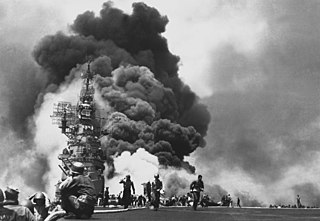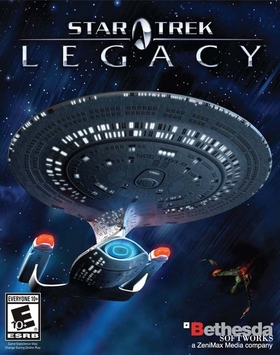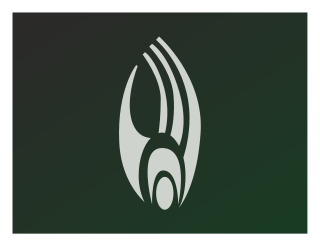
Kamikaze, officially Shinpū Tokubetsu Kōgekitai, were a part of the Japanese Special Attack Units of military aviators who flew suicide attacks for the Empire of Japan against Allied naval vessels in the closing stages of the Pacific campaign of World War II, intending to destroy warships more effectively than with conventional air attacks. About 3,800 kamikaze pilots died during the war, and more than 7,000 naval personnel were killed by kamikaze attacks.
Enterprise or USS Enterprise, often referred to as the Starship Enterprise, is the name of several fictional spacecraft, some of which are the main craft and setting for various television series and films in the Star Trek science fiction franchise. The most notable were Captain James T. Kirk's USS Enterprise (NCC-1701) from the original 1960s television series, and Captain Jean-Luc Picard's USS Enterprise (NCC-1701-D) from Star Trek: The Next Generation.
The Star Trek fictional universe contains a variety of weapons, ranging from missiles to melee. The Star Trek franchise consists mainly of several multi-season television shows and a dozen movies, as well as various video games and inspired merchandise. Many aspects of the Star Trek universe impact modern popular culture, especially its fictitious terminology and the concept of weaponry on spacecraft. The franchise has had a widespread influence on its audiences from the late 20th to early 21st century. Notably, Star Trek's science fiction concepts have been studied by real scientists; NASA described it in relation to the real world as "entertaining combination of real science, imaginary science gathered from lots of earlier stories, and stuff the writers make up week-by-week to give each new episode novelty." For example, NASA noted that the Star Trek "phasers" were a fictional extrapolation of real-life lasers, and compared them to real-life microwave based weapons that have a stunning effect.

Enterprise (NX-01) is the fictional spaceship that serves as the primary setting of the American science fiction television series Star Trek: Enterprise. The ship predates the other Starfleet ships named Enterprise and was first seen in the pilot episode "Broken Bow". Its missions included an initial period of deep space exploration and a mission into the Delphic Expanse following the Xindi attack on Earth; it was also instrumental in the formation of the United Federation of Planets with the Vulcans, Andorians and Tellarites.

The Cylons are the main antagonists of the Battlestar Galactica franchise, making appearances in the original 1978 series, the 1980 series, the 2004–2009 reboot series, and the spin-off prequel series Caprica. In the 1978 series, Cylon is also the name of the reptilian race who created the robot Cylons.

The Enemy Below is a 1957 American DeLuxe Color war film in CinemaScope about a battle between an American destroyer escort and a German U-boat during World War II. It stars Robert Mitchum and Curt Jürgens as the American and German commanding officers, respectively. Produced and directed by Dick Powell, the film was based on the 1956 novel of the same name by Denys Rayner, a British naval officer involved in antisubmarine warfare throughout the Battle of the Atlantic.

William "Bill" Adama is a fictional character in the re-imagined Battlestar Galactica television series produced and aired by the SyFy cable network. He is one of the main characters in the series, and is portrayed by Edward James Olmos. The character is a reimagining of Commander Adama from the 1978 Battlestar Galactica series, originally played by Lorne Greene.
Battlestar Galactica is a fictional space battleship based in the science fiction television series of the same name. In the series, the Twelve Colonies built about 120 Battlestars during the thousand-year war with the Cylons, whose battleships are known as Basestars.

Star Trek: Legacy is a 2006 real-time tactics space combat video game for Microsoft Windows and Xbox 360 developed by Mad Doc Software and published by Bethesda Softworks in association with CBS Paramount Television and CBS Consumer Products. Originally slated for release in the fall of 2006 to coincide with the 40th anniversary of Star Trek, the Windows version was not released in North America until December 5, 2006, and the Xbox 360 version until December 15. In Europe, both the PC version and the Xbox 360 version were released on December 22, 2006.

"Face of the Enemy" is the 140th episode of the American science fiction television series Star Trek: The Next Generation, and the 14th episode of the sixth season.

The Invasion of Lingayen Gulf, 6–9 January 1945, was an Allied amphibious operation in the Philippines during World War II. In the early morning of 6 January 1945, a large Allied force commanded by Admiral Jesse B. Oldendorf began approaching the shores of Lingayen from Lingayen Gulf, on the island of Luzon. U.S. Navy and Royal Australian Navy warships began bombarding suspected Japanese positions along the coast of Lingayen from their position in Lingayen Gulf for three days. On "S-Day", 9 January, the U.S. 6th Army landed on a roughly 25 mi (40 km) beachhead at the base of the Gulf between the towns of Lingayen and San Fabian.
"Warhead" is the 119th episode of the science fiction television series Star Trek: Voyager, the 25th episode of the fifth season. It aired on UPN on May 19, 1999.

"Year of Hell" is a two-part episode from the fourth season of the American science fiction television series Star Trek: Voyager which aired on UPN in November 1997. It aired in two parts, on November 5 and November 11, 1997. Part I was directed by Allan Kroeker and Part II by Mike Vejar; it was written by Brannon Braga and Joe Menosky. This includes a number of guest stars, including Kurtwood Smith.

"Exodus" are the third and fourth episodes of the third season from the science fiction television series, Battlestar Galactica. The episodes originally aired on the Sci Fi Channel on October 16 and 23, 2006.

The Borg are an alien group that appear as recurring antagonists in the Star Trek fictional universe. The Borg are cybernetic organisms (cyborgs) linked in a hive mind called "The Collective." The Borg co-opt the technology and knowledge of other alien species to the Collective through the process of "assimilation": forcibly transforming individual beings into "drones" by injecting nanoprobes into their bodies and surgically augmenting them with cybernetic components. The Borg's ultimate goal is "achieving perfection."

Early on 17 June 2017, the United States Navy destroyer USS Fitzgerald collided with MV ACX Crystal, a Philippine-flagged container ship, about 80 nautical miles southwest of Tokyo, Japan; 10 nautical miles southeast of the city of Shimoda on the Japanese mainland (Honshu).










